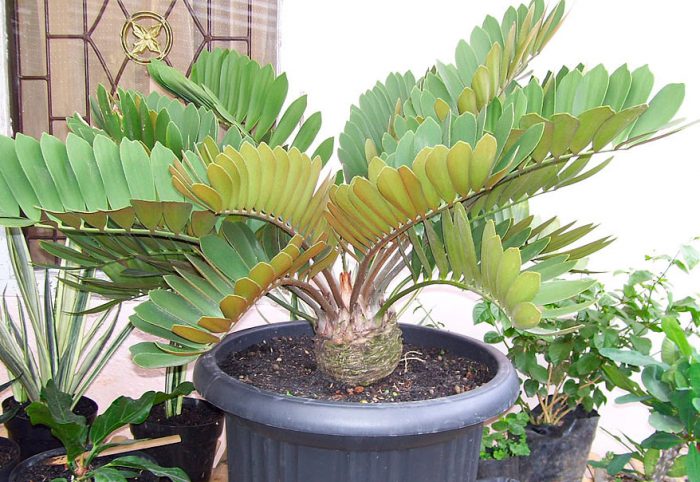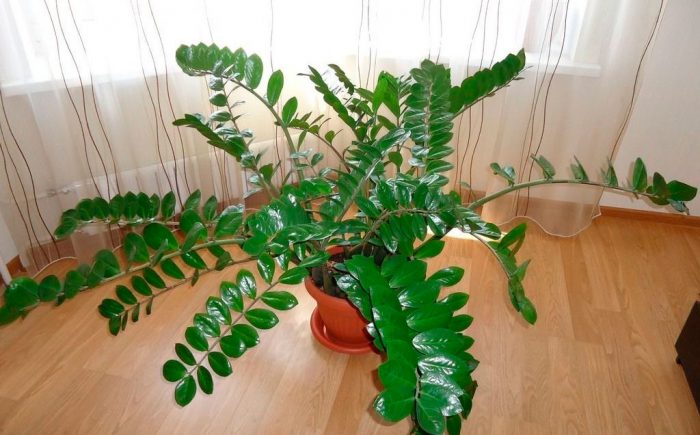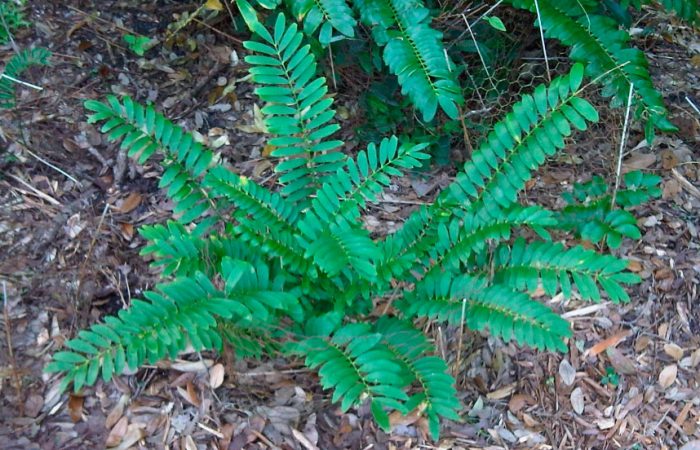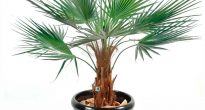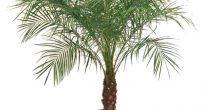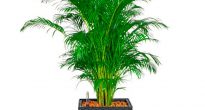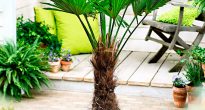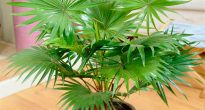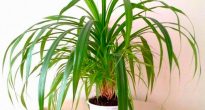Such an evergreen not very large plant like zamia (Zamia) is directly related to the Zamiaceae family. It has a massive barrel-shaped trunk as well as spectacular feathery foliage. This plant comes from tropical as well as subtropical regions of America.
If we translate the name of this flower from Latin, then it turns out - loss, loss. Zamia was the name given to empty cones of conifers. And in this plant, the reproductive organs (strobila) are very similar to coniferous cones.
This not very tall evergreen has a smooth, low stem, which is often underground, elongated, tuberous. Leathery, glossy, feathery leaves are oval-shaped. Their edges are serrated or solid, at the base divided into a pair of lobes (narrow and wide). Often, parallel veins are clearly visible on the foliage, available from below, which are initially painted in a pale green color, and then turn olive. Sometimes there are some thorns on a smooth handle.
This plant is dioecious. An adult plant that has reached mature age has female leaves on which megastrobilae are located, consisting of corymbose sporophylls with a whorled arrangement, and 2 hanging ovules are located on their lower side of the scutellum. Microstrobilis are located on the leaves of the male type. This slow-growing plant blooms very rarely at home.
Content
Home care
Illumination
Loves bright light and can easily tolerate direct sunlight, but it should be borne in mind that in the hot summer months at noon the plant should be shaded. To form a beautiful uniform leaf rosette, the palm tree must be gradually turned in different directions to the light every few days.
Temperature regime
A very thermophilic plant, which in the warm season must be provided with a sufficiently high temperature (from 25 to 28 degrees). A cool content (14-17 degrees) in winter is recommended. The room where the zamiya is located must be systematically ventilated, but at the same time protect it from cold air currents.
Humidity
There are no special requirements for air humidity. It grows and develops almost equally well with both low and high air humidity.For hygienic purposes, regular wiping of the leaves with a damp cloth is required.
How to water
In the warm season, water should be abundant. However, between waterings, the top layer of the substrate must dry out well. For this, they use extremely soft and settled water. With the onset of autumn, they begin to water less, and in winter, there should be poor watering. Make sure that no liquid stagnates in the soil, but at the same time the earthy clod should not completely dry out.
Top dressing
Top dressing is carried out in the warm season 1 time in 3 or 4 weeks. For this, a complex fertilizer is used for decorative deciduous house plants. In the cold season, they do not feed.
Earth mix
Suitable soil should be of medium density and high in nutrients. For the preparation of earth mixture,
it is necessary to combine leaf and sod land, peat, humus and sand, taken in equal shares. You also need to add crushed granite chips.
Transplant features
Since this is a slow-growing plant, it should be transplanted infrequently, as a rule, once every 3 or 4 years, and it is better to do this in the spring before the period of active growth. Don't forget good drainage.
Reproduction methods
Can be propagated by seeds or cuttings. Seeds are sown in a light soil mixture, while they should be buried by 1/2 part (of the diameter). It is necessary to cover with foil or glass and put in a warm place. The sprouts that appear dive separately into small containers.
The cuttings must first be put in water. When the roots appear, they are planted in the soil.
Pests and diseases
The shield can settle. If possible, pests should be removed and the leaves should be washed with soapy water. If the infection is strong, then special treatment will be required.
Water stagnation in the soil should not be allowed, as this can provoke the appearance of rot.
Possible difficulties
- Palm withers and rots the base of the stem - too much watering in winter.
- Brownish, dry specks on foliage - lack of minerals or too little watering.
- The plant has dropped its foliage abruptly - it was watered with cold water or watering was too poor.
Main types
Zamia pseudoparasitica (Zamia pseudoparasitica)
This plant is evergreen and it can reach a height of 300 centimeters. Adult zamia have foliage up to 200 centimeters long, and sparse thorns are scattered on their petioles. Linear leaflets reach 30 to 40 centimeters in length and 2.5 to 3.5 centimeters in width. The toothed leaves on the lower part have pronounced longitudinal veins.
Powdered zamia (Zamia furfuracea)
It is also an evergreen plant. Its trunk, almost completely hidden under the soil, has the shape of a turnip and on it is a bluish-gray leaf rosette, reaching from 50 to 150 centimeters in length. It happens that the trunk of an aged plant rises slightly above the soil surface. Leathery, dense, oblong-shaped leaves have a number of distinct, parallel veins on the seamy side. On their surface there is a dense layer consisting of light white scales, and young leaves have such a layer on 2 sides, and adults - only on the seamy side.
Broad-leaved zamia (Zamia latifolia)
This is a low evergreen palm tree with a rather thick club-shaped trunk, which can be either completely hidden under the ground, or rise above its surface. At its apex, 2 to 4 leaves are formed, which can be 50–100 centimeters long. The oval-oblong leaves are 5 centimeters wide and 15 to 20 centimeters long.
Dwarf zamia (Zamia pygmaea)
This plant is compact and evergreen, with a relatively small trunk, hidden underground, which is 25 centimeters long and 2 or 3 centimeters wide. The leaves are not very long (from 10 to 50 centimeters), with short (2 centimeters) strobili.Women's strobiles reach 5 centimeters in length. Also has tiny seeds (5 to 7 millimeters).

